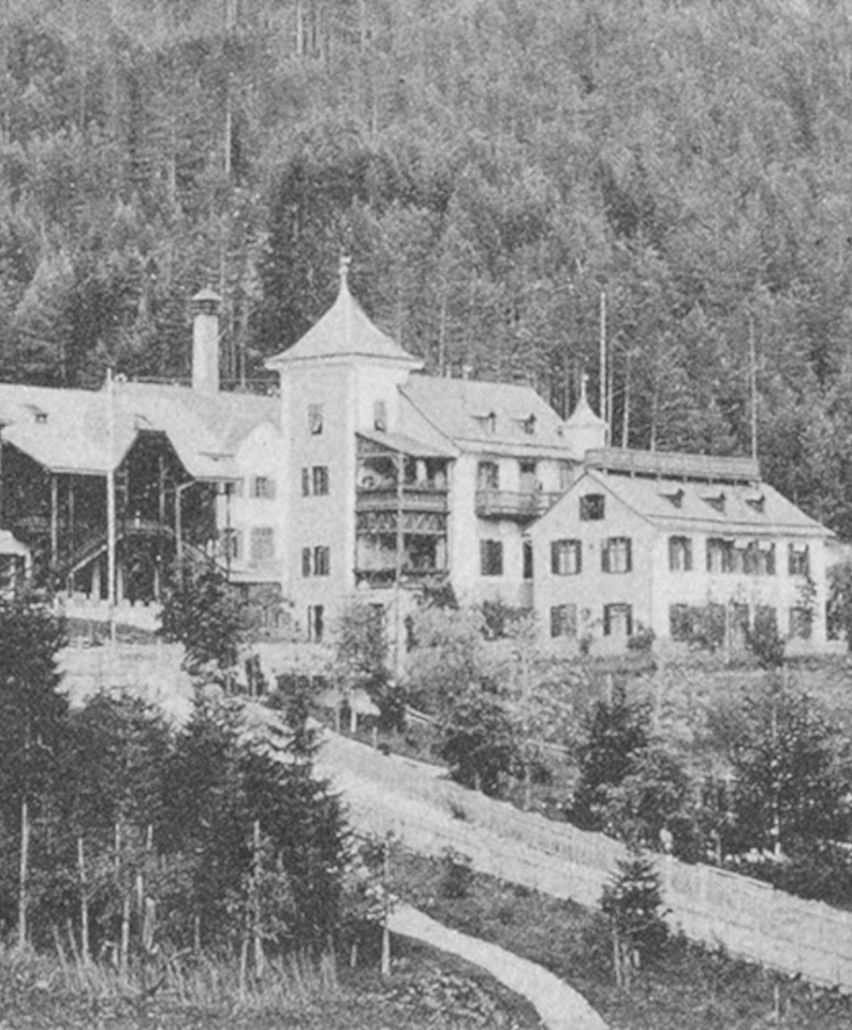
The history of Reith
Oil Shale Mining in the Karwendel Mountains
Oil shale mining in the upper Isar valley and in the neighbouring Tyrolean communities of Scharnitz, Seefeld and Reith looks back on a long common tradition. As early as the 14th century, stone oil was extracted by local farmers. Itinerant traders, so-called Dirscheler or Öltrager, peddled their wares in order to barter the medicinal product.
Deer oil, slate oil or mountain oil - the vernacular knows various names for the oil that strongly resembles asphalt - was indispensable in everyday use as a miracle cure for humans and animals. Due to its high content of organically bound sulphur, it has an anti-inflammatory effect and promotes the healing process in joints and wounds. The odorous folk medicine, a black, strong-smelling oil, was obtained by heating rock mixed with so-called bitumen. The mining areas on the Bavarian side were in the upper Isar valley between Wallgau and Vorderriss. Oil shale was mined there in the Ölgraben mine until 1960. The owner was the Ichthyol company Cordes, Hermanni & Co from Hamburg, which operated another mine extremely successfully in the Seefeld and Reith area. Oil shale was also mined here until 1964 and processed in the Maximilianshütte in Reith near Seefeld. Nowadays the oil is imported from France from a plant belonging to the group of companies. However, further processing still takes place in Tyrol, where the company Ichthyol Gesellschaft in Reith produces the basic substance for numerous medicines.
Hardly anyone knows any more that the profession of miner or miner ensured the livelihood of several generations in the border region until the 1960s. The extraction of stone oil had a favourable influence on cultural and social development, and as early as the mid-19th century a significant economic upswing could be observed in the area around Seefeld. Although there have been no active miners since the 1960s, there is a historical connection to this profession in many families. Therefore, it was the aim of an Interreg project to work up this common history in a well-founded and scientific way in order to preserve the cultural heritage for posterity.
The project was supported by the Interreg Austria-Bavaria 2014-2020 programme with funding from the European Regional Development Fund (ERDF).
Project start: 01.09.2019
Project end: 31.03.2022
Total financing costs: 25.000,- €
INTERREG funding: 75
Lead partner: Municipality of Reith near Seefeld,
Project partners: Municipalities of Wallgau, Krün, Mittenwald, Scharnitz, Seefeld, Tourism Association Region Seefeld, Alpenwelt Karwendel
The well-known Tyrolean geologist and mining scientist Peter Gstrein provided fascinating insights into the former mining industry for the extraction of rock oil in the western Karwendel.
You can find more information about the project here